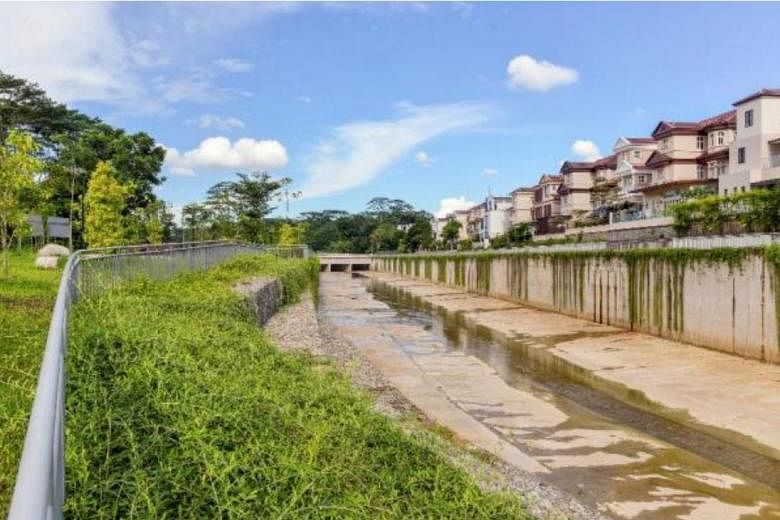A $300 million upgrade of the Bukit Timah First Diversion Canal - completed after seven years of work by national water agency PUB - serves to strengthen Singapore's flood resilience, Environment and Water Resources Minister Masagos Zulkifli said yesterday.
Speaking at a ceremony to mark the project's completion, Mr Masagos added that it was one of the most expensive and complex drainage improvement projects that the agency has undertaken, but one that was a "necessary investment" in preparation for the extreme weather that climate change will bring.
"You have probably already noticed some of the impact of climate change, such as more intense rainfall and prolonged dry spells," said Mr Masagos.
"By 2100, we could experience mean sea-level rise of up to 1m, an increase in daily mean temperatures as high as 4.6 deg C, and more extreme and intense weather events, which may lead to more frequent floods. The upgraded diversion canal will help us to better prepare for this."
PUB said the diversion canal, which is 3.2km long, will now be able to convey 30 per cent more rainwater than before.
Originally completed in 1972, the canal, which runs from Bukit Timah Road near Sixth Avenue to Clementi Road, was constructed to guard the area against floods, which had been frequent in the 1960s.
In 2009 and 2010, however, intense rainfall led to flooding in the basements of buildings in the area, such as Bukit Timah Shopping Centre.
Mrs Vivien Wong, 60, who has been selling leather products in the basement of the mall for close to 30 years, recalled rainwater seeping into her shop to at least ankle level and destroying 20 per cent to 30 per cent of her goods.
"The rain was very heavy. It was as if someone was pouring buckets of water onto us from above," she said, referring to the intense rainfall from a decade ago.
Following the experience, she made sure all her products were kept off the ground.
She and other retailers confirmed that they have not experienced similar flash floods in recent years, even on days with heavy rainfall.
PUB said the addition of tunnels and the deepening and widening of the canal will help alleviate the risk of flash floods along Bukit Timah Road and Dunearn Road. This, in turn, will benefit landmarks in the area such as Ngee Ann Polytechnic, Beauty World Plaza and Bukit Timah Shopping Centre.
The entire upgrading project, which began in September 2012, was delayed a few times owing to various engineering challenges faced by the agency.
Mr Yeo Keng Soon, PUB's director of catchment and waterways, said that the drainage project was "complex and challenging", and was hindered by "several tough obstacles" throughout the three construction phases. "The hilly terrain and tough ground conditions due to hard rock at depths shallower than anticipated meant that more time and effort were required for excavation works," he added.
The construction team encountered hard rock in the ground at a depth of 20m - instead of the expected depth of 30m - during the second and third phases of the project, and the latter involved constructing two tunnels across Military Hill.
The slopes at Military Hill also had to be stabilised using the "soil nailing" method - the insertion of reinforcing bars up to 10m in length into the slopes on both sides of the canal. This ensured that the slopes did not collapse during the construction works.
PUB said more than 10,000 soil nails were used in the third phase of the project, and it was the first time that the method was employed in drainage works in Singapore.
Mr Masagos said that despite PUB's efforts to upgrade Singapore's drainage system, it was not possible to completely eliminate the occurrence of flash floods.
He added that works to deepen and widen a 900m section of the canal between Rifle Range Road and Jalan Kampong Chantek will begin next month.
The project was awarded to Chan & Chan Engineering at a contract sum of $53.2 million and is expected to be completed by 2023.




